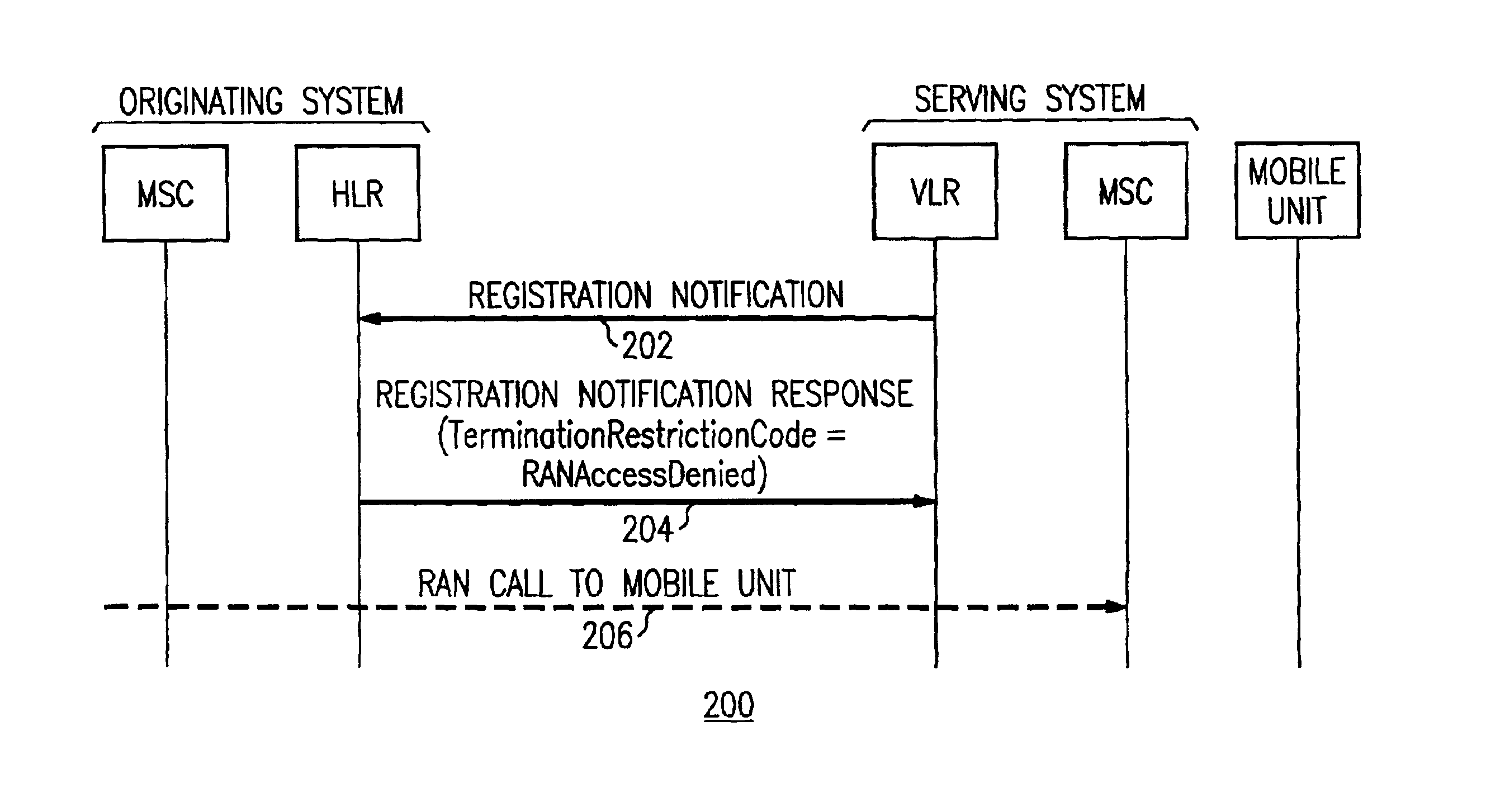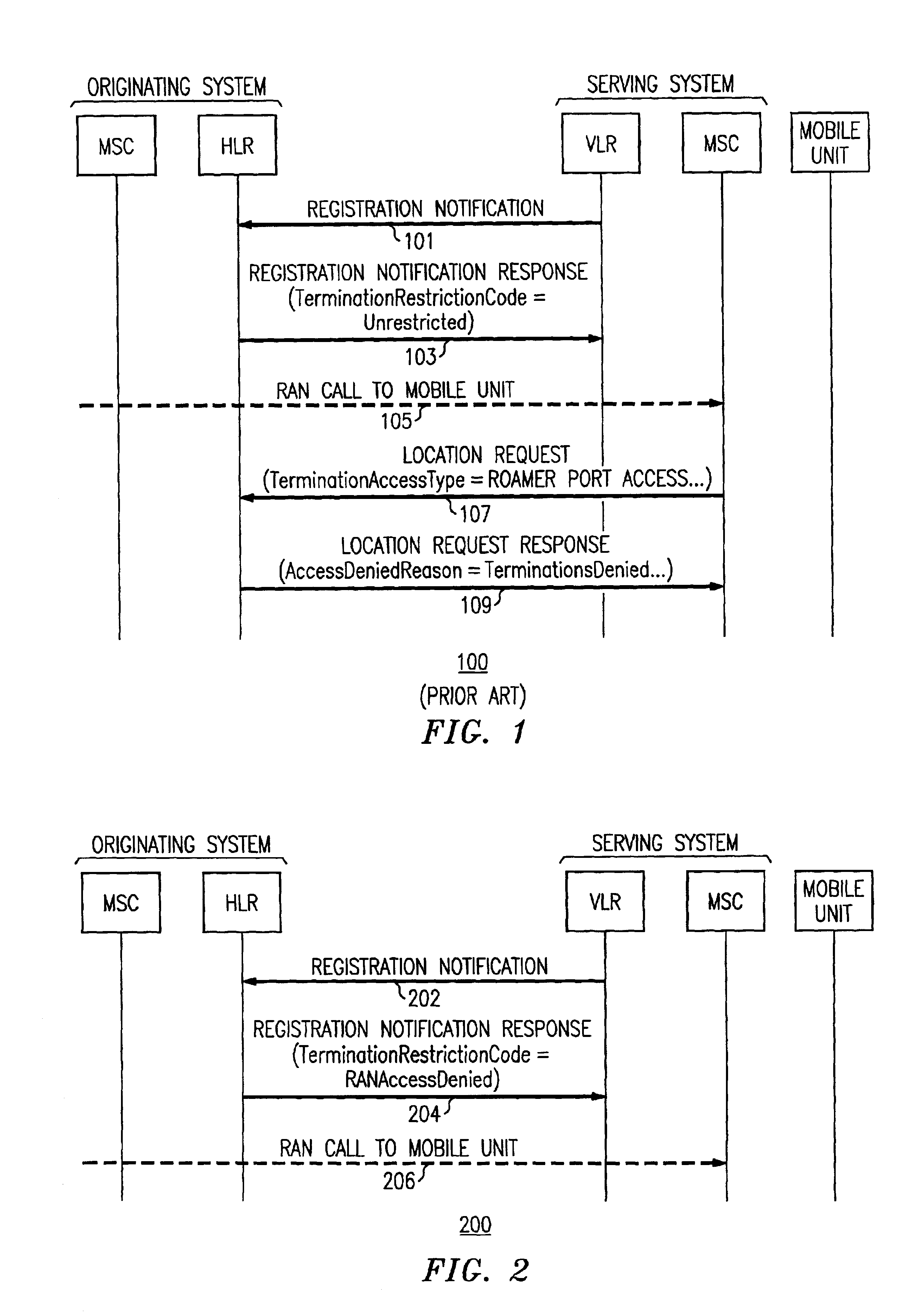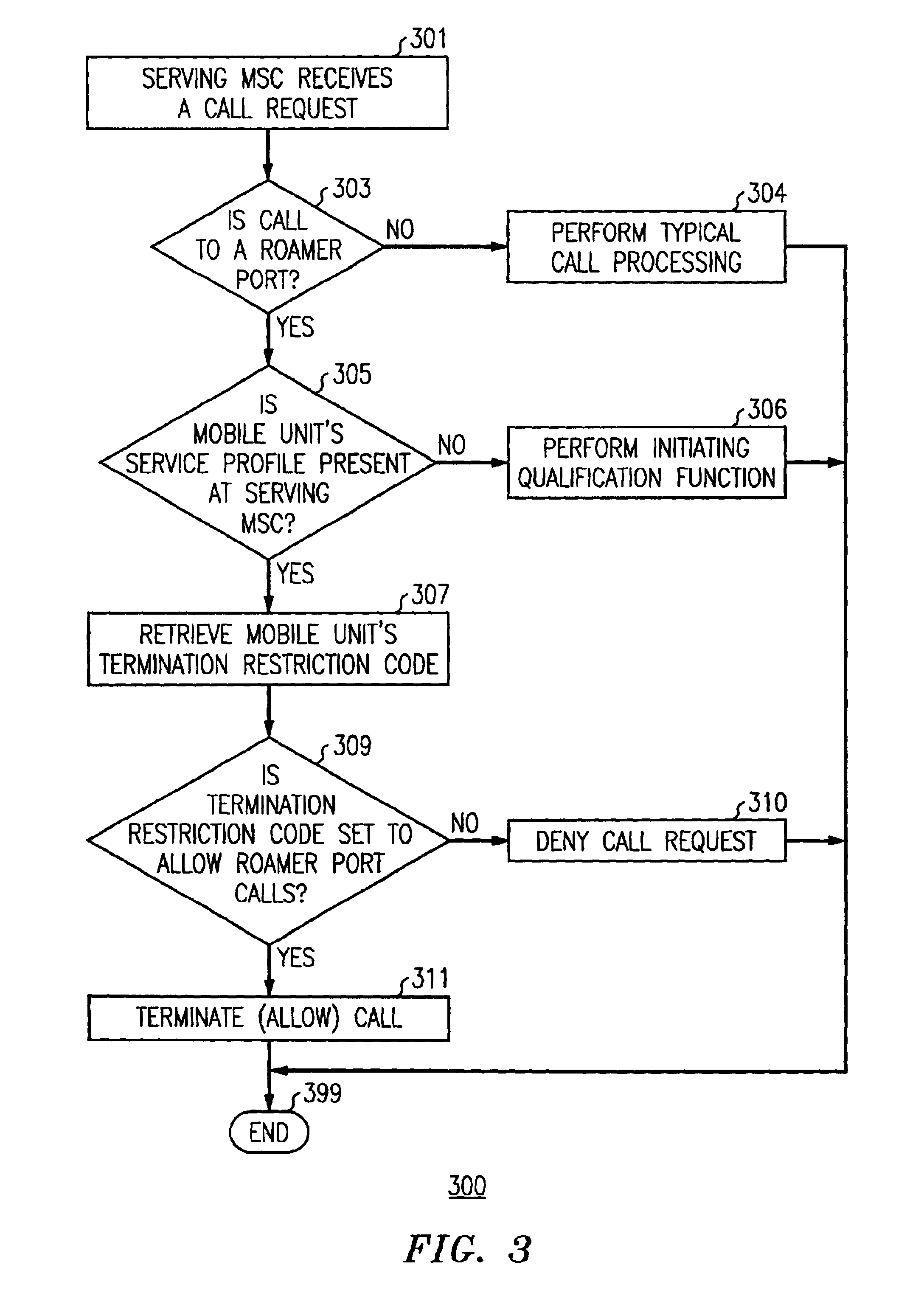Method and apparatus for restricting call terminations when a mobile unit is roaming
a mobile unit and call termination technology, applied in the field of wireless communication systems, can solve the problems of unnecessarily consuming network and system resources, affecting the start of a call, and affecting the service of the mobile unit,
- Summary
- Abstract
- Description
- Claims
- Application Information
AI Technical Summary
Benefits of technology
Problems solved by technology
Method used
Image
Examples
Embodiment Construction
[0022]The present invention can be better understood with reference to FIGS. 2 and 3. FIG. 2 depicts a ladder diagram 200 of a call flow for denying access to a roaming mobile unit in accordance with the present invention. The communication system includes an originating system (home) MSC, a Home Location Register (HLR), a Visitor Location Register (VLR), a serving (visited) MSC, and a mobile unit. The mobile unit preferably the originating MSC as its home system, and the HLR as its home registration database. The communication system is preferably an Advanced Mobile Phone Service (AMPS) / Personal Communications Service (PCS) wireless system, but could alternately be any wireless communication system, including but not limited to Global System for Mobile Communications (GSM), Code Division Multiple Access (CDMA), Time Division Multiple Access (TDMA), cdma2000, Wideband CDMA (W-CDMA), and UWC-136, a Wideband TDMA technology.
[0023]When traveling outside of the coverage area of the orig...
PUM
 Login to View More
Login to View More Abstract
Description
Claims
Application Information
 Login to View More
Login to View More - R&D
- Intellectual Property
- Life Sciences
- Materials
- Tech Scout
- Unparalleled Data Quality
- Higher Quality Content
- 60% Fewer Hallucinations
Browse by: Latest US Patents, China's latest patents, Technical Efficacy Thesaurus, Application Domain, Technology Topic, Popular Technical Reports.
© 2025 PatSnap. All rights reserved.Legal|Privacy policy|Modern Slavery Act Transparency Statement|Sitemap|About US| Contact US: help@patsnap.com



